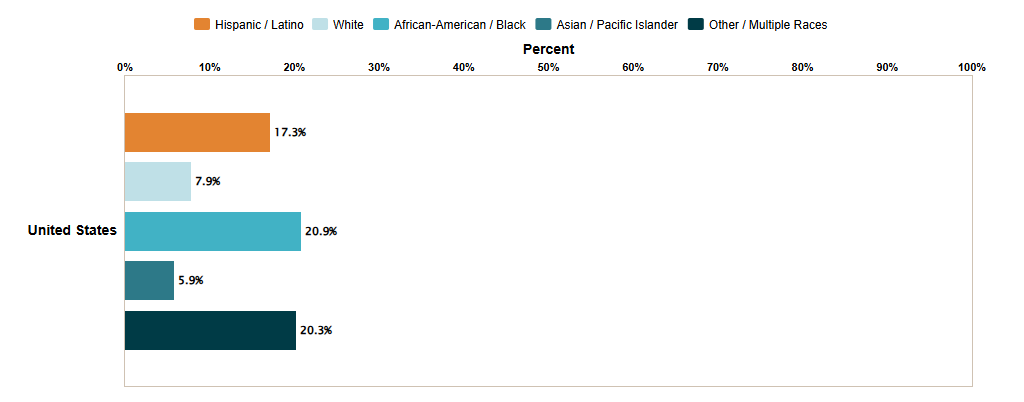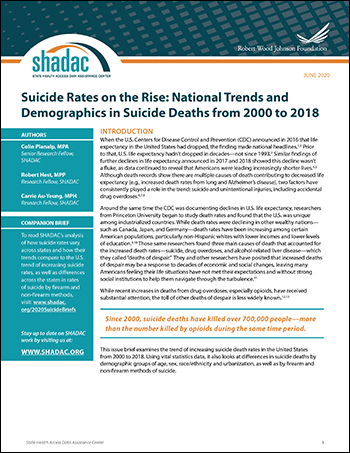Suicide deaths per 100,000 people
Measure Overview
Suicide is among the leading causes of death in the United States, with thousands of individuals dying by suicide every year. Numerous biological, psychological, and social risk factors are associated with suicide, such as clinical depression, chronic pain, alcohol and drug use disorders, and loss (e.g., familial, financial, social, vocational). Suicide often occurs when an individual experiences feelings of hopelessness and despair stemming from stressors and health issues. Monitoring rates of suicide deaths in the U.S. plays a key role in understanding which subpopulation groups are at increased risk of suicide and can help inform efforts to address the issue of suicide deaths.
State Health Compare provides annual, state-level rates of suicide per 100,000 people, based on data from the Centers for Disease Control and Prevention’s WONDER Database. Estimates are available annually beginning in 1999 and can be broken down by five categories: age, sex, race/ethnicity (Black/Asian/American Indian, Hispanic/Latino, White), metropolitan status (e.g., non-metropolitan area, small/medium metropolitan area, large metropolitan area), and use of a firearm.
Generate customized graphics using this data by selecting one of the options below.
Related Products

Updated Health Data Sets on State Health Compare: Explore Health Statistics and Health Data Visualizations
SHADAC’s public health research fellows and analysts consistently update measures on State Health Compare (SHC) in order to provide users with the most up-to-data available data. In this post, we will review the health data sets and measures that have been updated since our last measure update blog, including a short explanation of the measure and its data source.

Suicide Rates on the Rise: Examining Continuing Trends and Variation across the Nation and in the States from 2000 to 2018
Suicide deaths have not only increased significantly over the past nearly two decades, but their growth is continuing a pattern of acceleration in more recent years: From 2000 to 2009 the suicide death rate grew by 13 percent, but from 2009 to 2018 the rate grew by 21 percent.
